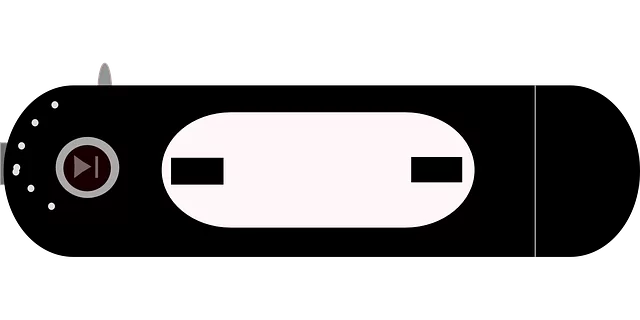Converting DivX to WMV is a game-changer for digital media compatibility, allowing users to enjoy high-quality videos seamlessly across devices and platforms. This process leverages advanced encoding technologies to preserve quality while compressing file sizes, addressing the challenges of format barriers in today's diverse digital landscape. By eliminating these hurdles, it ensures accessibility, enhances user experience, and expands reach for content creators. Future trends include improved compression, better visual/audio quality, and VR/AR integration, further revolutionizing media engagement across education, healthcare, and communication sectors.
In the ever-evolving digital media landscape, a recent breakthrough has captivated tech enthusiasts worldwide. This pioneering achievement revolves around successfully converting DivX to WMV formats, paving the way for seamless compatibility and enhanced content accessibility. The article delves into the intricacies of these codecs, exploring the challenges they pose and how their conversion offers a game-changing solution. By understanding this technical marvel, we uncover its profound impact on digital media consumption and future prospects.
Understanding DivX and WMV Formats: A Brief Overview

DivX and WMV are two distinct video formats that have played significant roles in shaping digital media. DivX, introduced in 1995, was a game-changer in video compression, offering high-quality video playback while significantly reducing file sizes. This made it ideal for streaming and downloading, revolutionizing the way folks accessed and shared multimedia content. On the other hand, WMV (Windows Media Video) was developed by Microsoft as part of its Windows Media Player suite. It quickly gained popularity due to its integration with Microsoft’s operating systems, becoming a standard for video playback on PCs and later, on mobile devices.
Converting DivX to WMV can be beneficial for users who want to ensure compatibility across platforms, especially when sharing videos. This process allows for seamless playback on various devices, from computers to modern smartphones, without sacrificing video quality. With the right conversion tools, users can easily adapt their beloved DivX videos to the WMV format, fostering a richer digital media experience.
The Need for Conversion: Overcoming Compatibility Challenges

In the realm of digital media, the need for conversion is paramount as diverse formats and devices create compatibility challenges. Users often find themselves caught in a labyrinthine web when attempting to play their preferred content across various platforms. For instance, the popular DivX video format, known for its high-quality compression, may not be supported by all media players or devices, leaving users seeking an effective solution. This is where converting DivX to WMV becomes essential.
Converting DivX to WMV offers a straightforward path to overcoming these compatibility hurdles. The WMV (Windows Media Video) format, widely supported across operating systems and devices, ensures that users can enjoy their media content without frustration. This process allows for seamless integration of DivX videos into the existing digital landscape, fostering a more inclusive and accessible media experience for all.
Unlocking the Potential: Why This Achievement is Significant

The ability to seamlessly convert DivX to WMV represents a significant milestone in digital media technology, opening up new possibilities for content creators and consumers alike. This achievement streamlines the process of file conversion, making it more accessible and efficient than ever before. With DivX known for its high-quality video compression and WMV offering excellent compatibility across various devices and platforms, this breakthrough ensures that users can enjoy their favorite media without format restrictions.
The significance lies in the fact that it simplifies the user experience by providing a straightforward solution to a common problem—the need to convert between different video formats. This technology not only caters to everyday users but also has implications for professional content developers, enabling them to reach a broader audience and ensuring their work remains accessible over time, regardless of evolving hardware or software landscapes.
Technical Insights: How was Convert DivX to WMV Possible?

The successful conversion of DivX to WMV was made possible by leveraging advanced digital media encoding technologies. At its core, this process involved a complex interplay of video and audio codecs designed to preserve quality while optimizing file size. The initial step focused on transcoding DivX videos into an intermediate format that could be easily manipulated without significant loss in visual or auditory fidelity.
Specialized software utilized efficient compression algorithms, such as those based on the H.264/AVC standard for video and AAC for audio. These codecs enabled a sophisticated analysis of the original content, identifying and removing redundant data while intelligently re-encoding the media stream. The result was a smaller file size without compromising the overall experience, making it ideal for streaming or storage in the WMV format.
Impact and Future Prospects: Expanding Digital Media Horizons

The advent of digital media technologies has revolutionized the way we consume and interact with content, opening up vast new horizons for both creators and audiences alike. Achievements like seamlessly converting DivX to WMV have played a pivotal role in this transformation. By breaking down compatibility barriers, these innovations ensure that multimedia files can be accessed and enjoyed across various platforms and devices, fostering inclusivity and accessibility.
Looking ahead, the future of digital media promises even more groundbreaking advancements. As technology continues to evolve, we can expect to see improved file compression techniques, enhanced visual and audio quality, and seamless integration with emerging technologies like virtual reality (VR) and augmented reality (AR). These developments will not only enrich our entertainment experiences but also transform industries such as education, healthcare, and communication, making digital media an even more integral part of our daily lives.
The successful development of a technology to seamlessly convert DivX to WMV marks a significant milestone in digital media. By overcoming compatibility challenges, this achievement expands access to multimedia content, offering users greater flexibility and enjoyment. As we look ahead, continued advancements in conversion technologies will further enrich our digital landscape, opening new possibilities for content creation, distribution, and consumption. The ability to easily convert between formats like DivX and WMV is a game-changer, ensuring a more inclusive and vibrant digital media experience for all.
